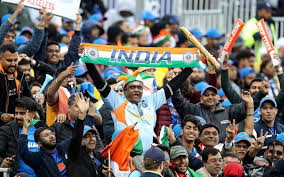Indian cricket finds itself grappling with a familiar challenge—a generational slump. Historically, such phases occur roughly every 11-12 years. The most recent one has seen India endure heavy defeats against top cricketing nations, echoing the team’s struggles during the 2011-12 season. Back then, India faced consecutive 0-4 Test series losses to England and Australia. Fast forward to today, the team has been humbled 0-3 by New Zealand at home and 1-3 by Australia, with a rain-affected Brisbane Test potentially saving them from a worse fate.

India, as one of the most sought-after cricketing teams globally, is held to exceptionally high standards, especially in SENA (South Africa, England, New Zealand, and Australia) countries. While a transition phase is inevitable for any team, India’s slump appears more pronounced and prolonged than others. A major factor contributing to this is the nation’s deep-rooted “icon culture,” where star players are revered to the point of compromising team performance.
The Burden of Hero Worship
Indian cricket has long struggled with the tendency to prioritize iconic players over rational team decisions. The same issue that plagued the team in 2011-12 persists today. During that earlier slump, legends like Sachin Tendulkar, Virender Sehwag, and VVS Laxman delivered underwhelming performances, averaging 35, 19.91, and 21.06 respectively in overseas tours. While Rahul Dravid stood tall in England with an average of 76.83, he too faltered in Australia, averaging just 24.25.
Despite their declining contributions, these players were retained, largely due to the emotional attachment of fans and the fear of backlash among selectors and administrators. Decision-makers often avoid dropping iconic players, instead waiting for them to retire voluntarily. This reluctance to act decisively not only drags the team down but also prolongs the recovery from such slumps.
Learning from Australia’s Pragmatism
Australia’s cricketing culture offers valuable lessons for India. The Australian selectors have consistently demonstrated the courage to make tough decisions. When Ricky Ponting, one of cricket’s greatest batters, was dropped by selector John Inverarity, it was a clear statement: team performance comes first. There was no attempt to sugarcoat the decision as “resting” or “rotating,” a trend that has become commonplace in Indian cricket.
More recently, Australia showed the same clarity during their tour of India. Players like Nathan McSweeney and Mitchell Marsh were dropped despite decent performances, allowing fresh faces like Sam Konstas and Beau Webster to step in and deliver match-winning contributions. This willingness to prioritize on-field value over reputation is why Australia rarely suffers prolonged slumps, unlike India.
The Role of Selectors: A Critical Responsibility
Selectors have the potential to shape a team’s fortunes far more than any coach. Yet, in India, they often operate under immense pressure from fans, media, and administrators. The reluctance to make tough calls stems from the cultural obsession with iconic players.
Take Rohit Sharma’s current form as an example. A rational assessment of his contributions is crucial, yet it remains uncertain whether the selectors can act decisively. The media’s disproportionate focus on the coach’s role further sidelines the significance of selectors, who must rely on their cricketing instincts and judgment to make bold choices.
A Collective Effort for Change
If Indian cricket is to emerge stronger, it requires a collective shift in mindset. Fans, media, administrators, and former cricketers must unite to prioritize the team over individuals. Decisions should be driven by cricketing logic, not emotions or brand value.
Ajit Agarkar, as the chairman of selectors, faces the challenge of setting a precedent. Dropping an underperforming star, regardless of their stature, sends a clear message that Indian cricket values results over reputations. Without this, the team risks sinking deeper into its transition phase.
Conclusion: Putting the Team First
India’s periodic slumps are not unique, but the depth and duration of these phases often are. The solution lies in learning from nations like Australia, where performance trumps sentiment. By empowering selectors to make bold decisions and shifting the focus from individual icons to the team’s success, Indian cricket can bounce back more quickly.
The message is simple yet profound: Indian cricket must come first, even if it means saying goodbye to an Indian great before their time.


